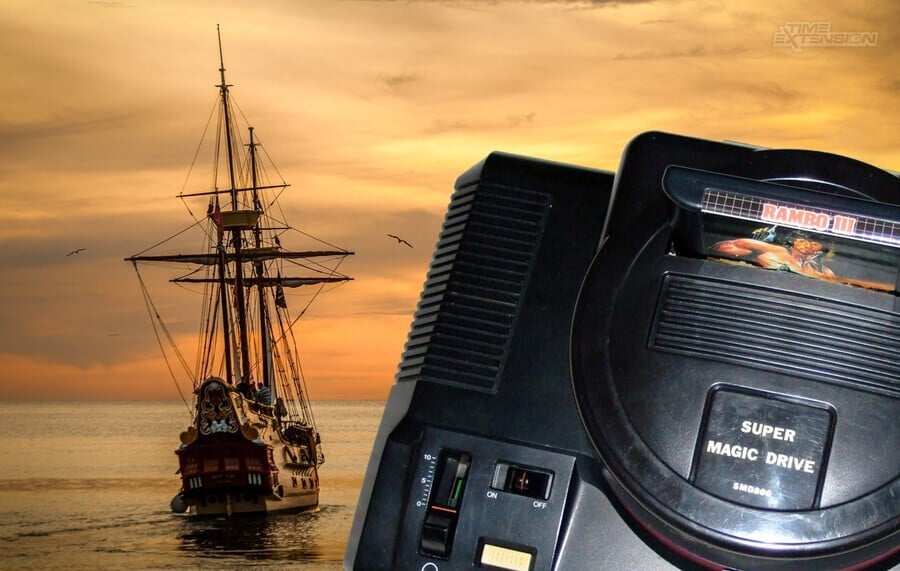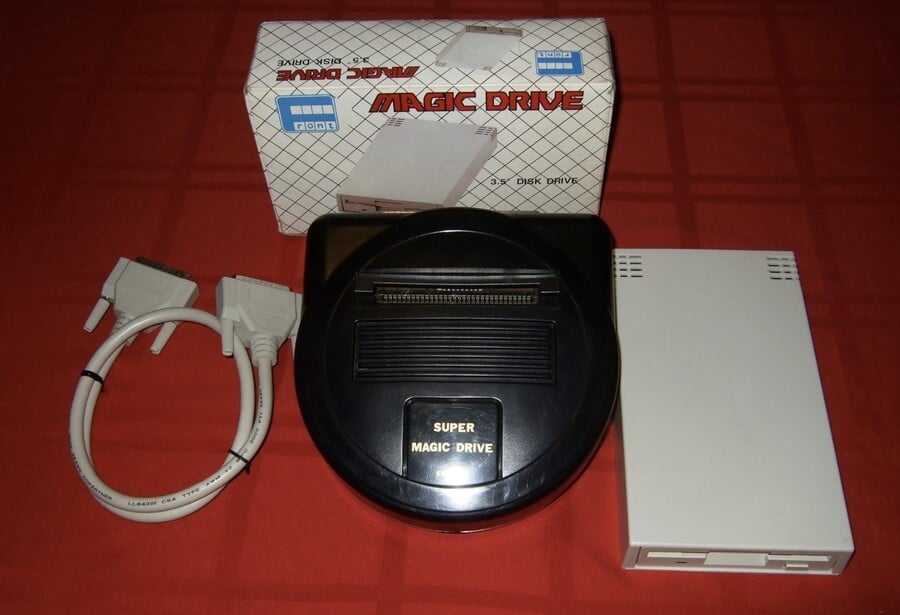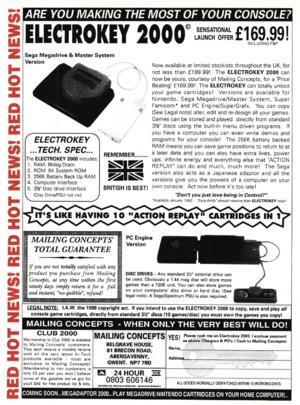
The early '90s introduced the world to import gaming. With long delays between Japanese and western release dates the norm, people started looking beyond high-street retailers for their home console and software needs.
This led to the rise of ‘grey importers’. Small shops and mail-order catalogues that were able to access the latest and greatest from around the world in weeks rather than years. These unofficial distribution channels were as efficient as they were lawless. Unencumbered by boring details like licensing, trade agreements or corporate schedules.
So when a small operation out of Taiwan started selling ‘backup’ devices that allowed you to pirate cartridge games for your Sega Mega Drive / Genesis, some importers were more than happy to add them to their inventory.
This is the story of how the first Mega Drive piracy device made its way west: the Super Magic Drive – and how these early piracy systems helped facilitate the rise of emulation and online ROMS.
Your Neighbourhood Blockbuster
The Super Magic Drive is referred to as a ‘backup’ device in polite circles, but the reality is it was designed for software piracy. Released in 1991, it allows users to ‘dump’ game cartridges onto standard 3.5” disks.
The system consists of two parts. There’s the main peripheral, which is roughly the size of a Master System Power Base converter and plugs into your Mega Drive’s cartridge slot. This connects to an external hard drive.
Boot the system, and you’ll be greeted with a proprietary BIOS system, allowing you to:
-
Play the cartridge in the slot
-
Copy the cartridge to an external disk
-
Load a game from an internal disk
In practical terms, it meant you could pop down to your local Blockbuster, rent a couple of games, ‘back them up’ to disk, and play the games from your legally dubious disks whenever you wanted.

Depending on the size of the game, you might be able to fit a couple of Mega Drive titles onto one standard 3.5” disk. Larger games like Streets of Rage 2 might need two disks.
Little Formosa
There was a small shopping mall up the road from my childhood home in Australia. The local neighbourhood was a hub for Taiwanese ex-pats, which meant you’d find late-night pool halls, karaoke lounges, and dumpling shops prefixed with the word ‘Formosa’ – the original name for Taiwan – lighting up the suburban tedium.
There was also an import video game store. The guy who owned it had a row of Neo Geo home consoles set up that you could play in 20-minute increments for $2 a pop. He also stocked a bunch of import games.
Less prominent were the backup devices he had stashed under the counter. Long story short, I ended up purchasing a Super Magic Drive sometime around 1993. It cost $700 AUD ($450 USD) – which is about $1400 ($950 USD) in today’s money. It was a huge chunk of change.
Ignoring the ethics and legally dubious nature of the device, it allowed me to amass a huge collection of Mega Drive titles on 3.5” disks. It was certainly a novelty in suburban Australia. While piracy was rampant on home computers at the time, being able to copy cartridges was still viewed as a dark art and not something anyone wanted to openly promote, or even acknowledge.
Bulletin Boards And Back-Up ROMS
What I didn’t realise back then is you could also hook up the Super Magic Drive to your PC. This enables you to upload games to your PC (rather than storing them on disk) and access them directly from the hard drive.
Other, smarter people did realise this. Notably Chad Sherman from San Francisco, California. He ran a bulletin board back in the early '90s called Maphia. Although primitive by today’s standards, the bulletin board hosted numerous Mega Drive ROMs that people had uploaded for sharing – some 400 games in total. Also, you could purchase Super Magic Drives via the site. You know, in case you needed to ‘back up’ copies of games you already legally owned.
The audience with the hardware and know-how to access Maphia back in the early '90s was utterly minuscule – But Sega was eventually alerted to its existence, had one of its IT experts infiltrate the site, and eventually sued Sherman.

While the board was subsequently shut down, the genie was out of the bottle. People had not only realised that they could dump gaming ROMs from cartridge to disk and hard drive, but the bulletin board had also helped disburse these ROMs to private computers and networks around the world.
Over the coming decade, as the Internet began to take shape, these same ROMs would form the backbone of the emulation sites that sprang up.
Far East of Eden
If Chad Sherman was the fall guy in this saga, the person who made it possible is one Meng-Ming Liu, the proprietor of Front FarEast Industrial Corporation.
He founded the Taiwanese company in 1983 and initially focused on the distribution of Acer’s early home computers before moving into software development and, ultimately, various computing peripherals. Whatever else the company may have produced, it’s best remembered for the Super Magic Drive, which first appeared in back alley electronics stores around 1991.
The system’s Taiwanese heritage isn’t a coincidence. Taiwan was responsible for approximately 90% of the world’s advanced semiconductor production in 2022. The country’s focus on high-end technology has provided both economic and security benefits since the 1980s. It’s also encouraged a certain legal ambiguity when it came to unlicensed tech hacks.
If Japan was responsible for supplying the world with cutting-edge technology back in the '80s and '90s, neighbouring Taiwan was looking at ways to adapt and augment it for local needs. It’s an attitude that Front FarEast Industrial Corporation embraced when it developed the Super Magic Drive and its subsequent Super Nintendo variation, the Super Wild Card.
Other manufacturers also got in on the act, and the mid to late '90s would see variations on the Super Mega Drive released for cartridge-based systems – including the Nintendo 64 – until CDs made them redundant.
I Fought The Law…
Looking back at magazines from the era, I’ve never found any articles acknowledging backup devices and only one print ad – published in the February 1992 issue of Game Zone. So unless you knew a morally dubious importer with links to Taiwan, you’d be hard-pressed to find one of these back in the day – or even know they existed.
Despite this, the Super Magic Drive’s legacy lives on. Some of those early ROMs that found their way online are still lurking on emulation sites and the dark recess of the internet. Not only are they preserved in-time, but they’ve also provided the raw elements for various fan translations and ROM hacks.

As for my local import shop, that went bust after a few years. Word around town was that Sega launched a legal case and sued them out of business – but that’s just rumour and schoolyard gossip. For all we know, the guy struggled to turn a profit on import games and Neo Geo in-store rentals.
Whatever actually happened, that dingy little shop and my Super Magic Drive exposed my friends and me to the illicit world of console piracy and Taiwanese tech hack (see also: Street Fighter 2 Rainbow Edition).
In the process, it gave us a glimpse of the wider world and what lay beyond our suburbs; a preview of the global economy and international channels that would arrive with the Internet and the new millennium – the same connectivity that would ultimately kill the grey import industry.
